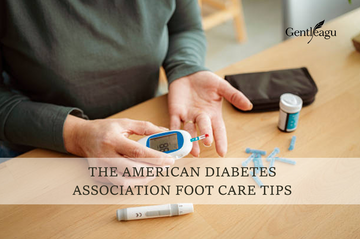The American Diabetes Association Foot Care Tips: Essential Guidelines for Healthy Feet
Foot care is an essential aspect of managing diabetes. People with diabetes are at higher risk of foot problems due to poor circulation, nerve damage (neuropathy), and a greater susceptibility to infections. To prevent serious complications such as ulcers or amputations, regular foot care is vital. The American Diabetes Association (ADA) has outlined key foot care tips to help individuals maintain healthy feet.
1. Inspect Your Feet Daily
Why it’s important: Nerve damage caused by diabetes can reduce sensitivity in your feet, making it harder to notice cuts, blisters, or sores that could lead to infections. Daily inspections help detect problems early.
What to do:
- Examine your feet every day for redness, cuts, blisters, swelling, or cracks.
- Use a mirror to check the bottoms of your feet, or ask a family member for help.
- Watch for changes in skin color, temperature, or texture that may indicate underlying issues.
2. Keep Your Feet Clean and Dry
Why it’s important: Moisture can promote the growth of bacteria or fungi, increasing the risk of infections. Keeping your feet dry reduces this risk.
What to do:
- Wash your feet daily with lukewarm water and mild soap. Avoid hot water, as it can dry out the skin.
- Dry your feet thoroughly, especially between the toes, to prevent fungal infections.
- If needed, use antifungal powder to keep your feet dry and prevent fungal growth.
3. Moisturize Your Feet Regularly
Why it’s important: Dry skin can crack, creating entry points for infections. Moisturizing keeps the skin soft and healthy.
What to do:
- Apply fragrance-free moisturizer daily to your feet but avoid putting lotion between your toes to prevent excess moisture.
- Use gentle, chemical-free foot creams for hydration.
4. Wear Proper Footwear
Why it’s important: Ill-fitting shoes can cause blisters, calluses, and pressure sores, which may lead to infections. Proper footwear protects your feet from injury.
What to do:
- Choose well-fitting shoes with enough room for your toes to move freely.
- Avoid tight shoes, high heels, or shoes that pinch.
- Look for footwear with cushioning and support to protect against pressure points.
- Check inside your shoes for debris or rough seams before wearing them.
5. Check Your Feet for Abnormalities
Why it’s important: Early detection of problems such as cuts, calluses, or ingrown nails can prevent serious complications.
What to do:
- Have regular foot exams with a healthcare provider, especially if you have neuropathy or circulation issues.
- Don’t attempt to treat corns, calluses, or ingrown nails yourself; consult a podiatrist.
6. Maintain Good Blood Sugar Control
Why it’s important: High blood sugar levels can worsen circulation and nerve damage, increasing the risk of foot complications.
What to do:
- Monitor your blood sugar regularly and keep it within the target range recommended by your doctor.
- Follow your treatment plan, including diet, exercise, and medications.
- Schedule regular checkups to ensure proper diabetes management.
7. Avoid Smoking
Why it’s important: Smoking reduces blood flow to the feet, worsening circulation problems and increasing the risk of ulcers and infections.
What to do:
- Quit smoking to improve circulation.
- Speak to your doctor about support programs or medications to help you quit.
8. Protect Your Feet from Extreme Temperatures
Why it’s important: Diabetes-related nerve damage may make it harder to sense extreme temperatures, putting you at risk of burns or frostbite.
What to do:
- Avoid hot water bottles, heating pads, or hot baths, as they may cause burns without you realizing it.
- Wear warm socks and shoes in cold weather to prevent frostbite.
9. Seek Medical Attention for Foot Problems Early
Why it’s important: Prompt treatment of even minor foot issues can prevent infections and serious complications like ulcers.
What to do:
- Contact your doctor immediately if you notice redness, swelling, warmth, pus, or wounds that don’t heal.
- Don’t ignore foot pain, as it could signal an underlying problem.
10. Consider Custom Footwear or Orthotics
Why it’s important: Custom insoles or shoes provide extra support and protection, reducing the risk of injury, especially for those with foot deformities or uneven pressure.
What to do:
- Consult your healthcare provider or podiatrist about custom orthotics if you have flat feet, bunions, or other issues.
Conclusion: Proactive Foot Care is Key
Foot care is a vital part of diabetes management. By following these ADA foot care tips, you can prevent complications and keep your feet healthy. Inspect your feet daily, maintain proper hygiene, wear appropriate footwear, and manage your blood sugar levels. Additionally, seek medical attention promptly for any issues and consider custom footwear if needed.
Making foot care a priority can significantly reduce the risk of infections, ulcers, and amputations. Protect your feet by incorporating these essential habits into your daily routine.
